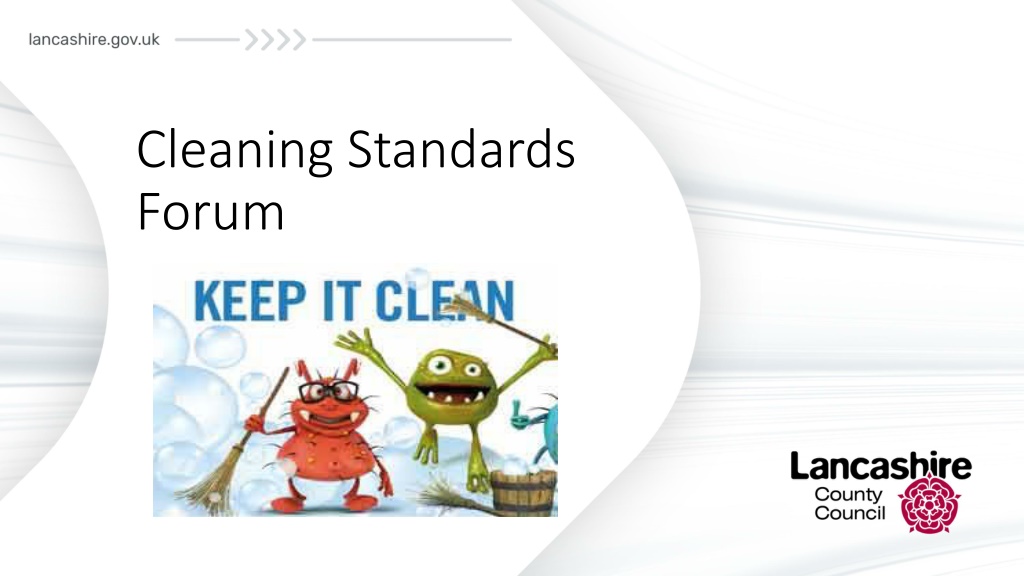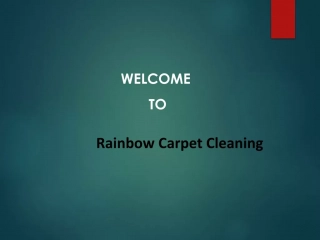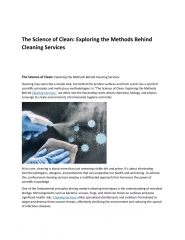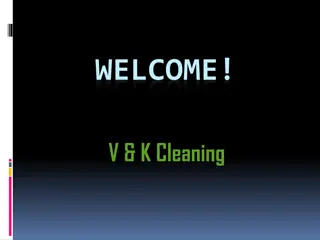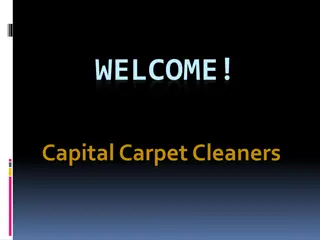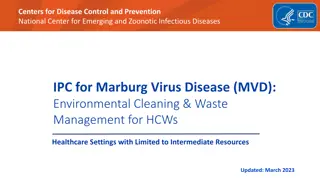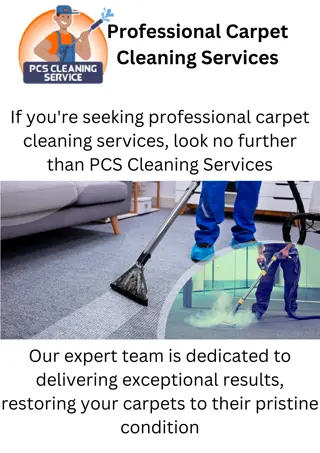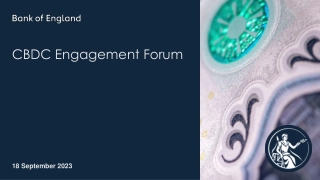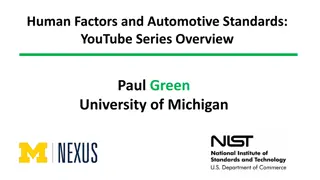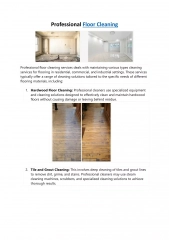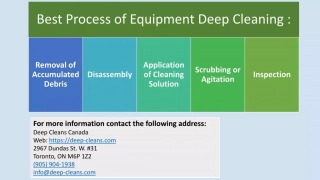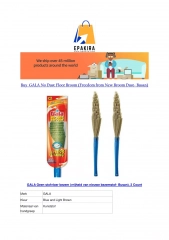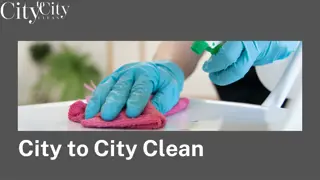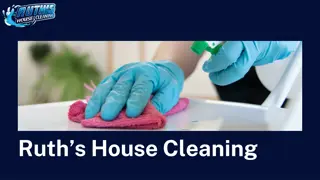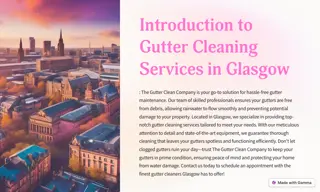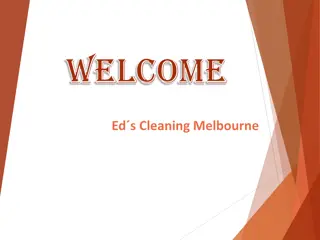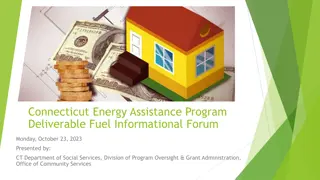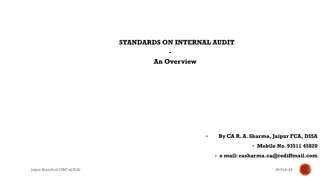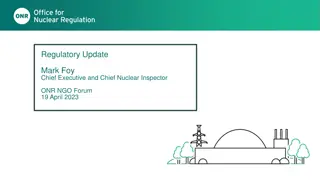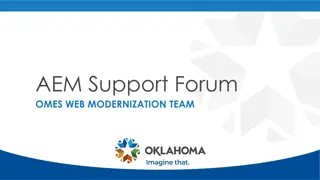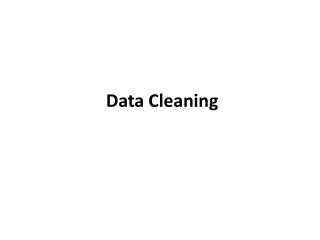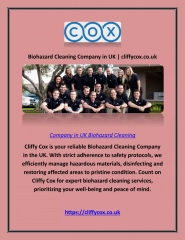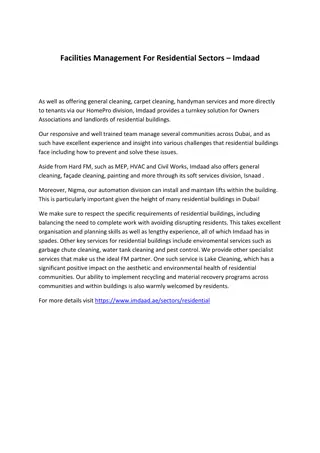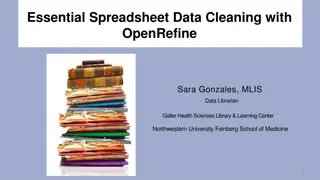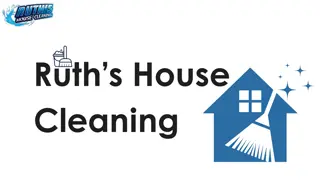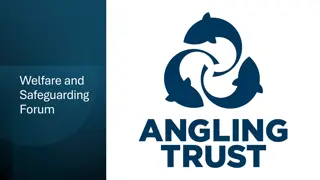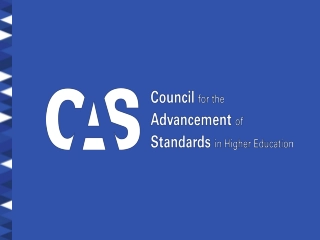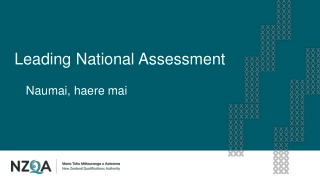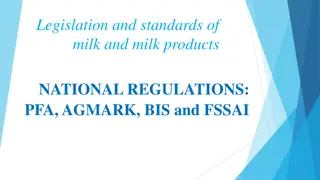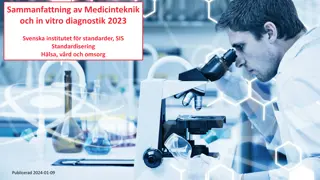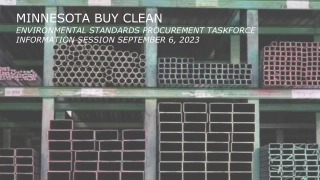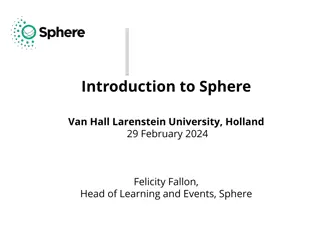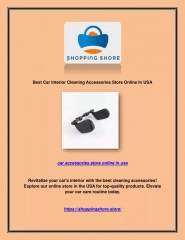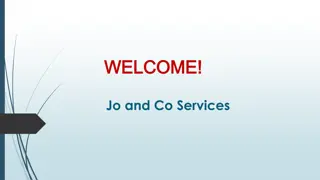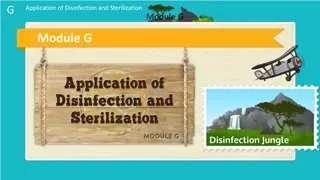Best Practices for Cleaning Standards Forum
Learn the importance of cleaning standards in reducing Healthcare Associated Infections (HCAI), introduction to new standards, science behind cleaning practices, and practical cleaning techniques. Understand the impact of cleanliness on patient outcomes and discover resources for implementing new cleaning standards effectively.
Best Practices for Cleaning Standards Forum
PowerPoint presentation about 'Best Practices for Cleaning Standards Forum'. This presentation describes the topic on Learn the importance of cleaning standards in reducing Healthcare Associated Infections (HCAI), introduction to new standards, science behind cleaning practices, and practical cleaning techniques. Understand the impact of cleanliness on patient outcomes and discover resources for implementing new cleaning standards effectively.. Download this presentation absolutely free.
Presentation Transcript
Cleaning Standards Forum
Introduction Housekeeping Presentation/activities Evaluation forms
Objectives Aims You will learn the best approach to cleaning and why it is important in reducing Health Care Associated Infections (HCAI) Introduce the new cleaning standards Nov 22 You will learn the science behind good cleaning practices You will learn how to clean surfaces with wet wipes/disinfectant products in the clinical/ care home setting By the end of the session you should be able to: Set the standard of cleanliness to be achieved Identify who has overall charge of cleaning Identify the frequency of cleaning areas and equipment Identify colour coding for different areas
Why must we clean? In acute settings in England and Wales 1:16 patients (6.4%) will acquire a Health Care Associated Infection (HCAI). Patients are 7 times more likely to die if they have an HCAI.
Introducing new cleaning standards https://www.england.nhs.uk/wp-content/uploads/2021/04/B0271- national-standards-of-healthcare-cleanliness-2021.pdf https://www.england.nhs.uk/wp-content/uploads/2021/04/B0271- national-standards-of-healthcare-cleanliness-2021-appendicies-april- 2021.pdf https://www.property.nhs.uk/news-insight/news/new-cleaning- standards/
Cleaning and disinfecting a commode and pan manually Perform hand hygiene before donning PPE Wear eye protection if there is a risk of splashing to the eyes. Cover commode pan with lid and carefully remove from the commode to avoid spillages. Empty contents into en-suite toilet in the residents room or Transfer the covered commode pan to the sluice room the contents into the waste disposal, if not disposed of in toilet. Rinse the pan with cold water or place in the bedpan washer (if available) Immerse the cloths or wipes into the chlorine solution and squeeze the excess solution out. Wipe the outside of the pan first then the inside do not dry with paper towels but leave inverted to dry naturally (Contact time) Dispose of the cloth into clinical waste bin
Cleaning the Commode *****Dispose of cloth after each step. 1.Using either the Chlorine solution or wipes, start wiping the commode at the top of the backrest, front and back and work down to the seat- 2. Clean the arms 3. Clean the top side of the seat 4. Clean the toilet seat top and underside- 5. Clean legs 6. Replace pan into holder. 7. Clean the seat cover top side first then underside and leave propped up to dry. 8. Replace seat cover when dry.
Products You should never mix different types of cleaning/disinfecting products (unless specified by the manufacturer) as the chemicals may react with each other and may produce harmful gases. Use each product as recommended by the manufacturer. Any made-up solution should be discarded after 24 hours. Make up a new solution every day. Always use the products provided at your place of work. Don t bring in your own cleaning products from home.
Decontamination of body fluid spillages Place a caution sign at the spill Don appropriate PPE; minimum gloves and apron. Remove the main bulk of the spill from the area using paper towels/ blue roll, and placed into a clinical waste bag. Use a chlorine product to thoroughly disinfect the area using the principles of cleaning and leave to air dry. Remove the caution sign when the surface is completely dry
Cleaning storage and equipment Cleaning equipment also needs to be clean to avoid cross contamination Equipment must be cleaned and dried between use (mop buckets, cleaning trolleys) Mop heads and cloths must be laundered daily or disposed of daily Cleaning carts should have separation between clean and dirty areas They should never have supplies of clothing, laundry or food and drink Should be thoroughly cleaned at the end of the day or shift Should be stored safely when not in use
To summarise If something can be cleaned, then it needs to be on a cleaning schedule with audit. The NPSA Guidance is a great resource for care homes - Adhering to it will help you to abide by the Health and Social Care Act -Regulation 12 cleanliness and infection control. Deep Cleans following an outbreak take place 48 hours after the last symptomatic resident. Think about staff rooms and office areas remember they need cleaning too. Look at our web page lots of information there.
InfectionPrevention@lancashire.gov.uk https://twitter.com/lancsipc
